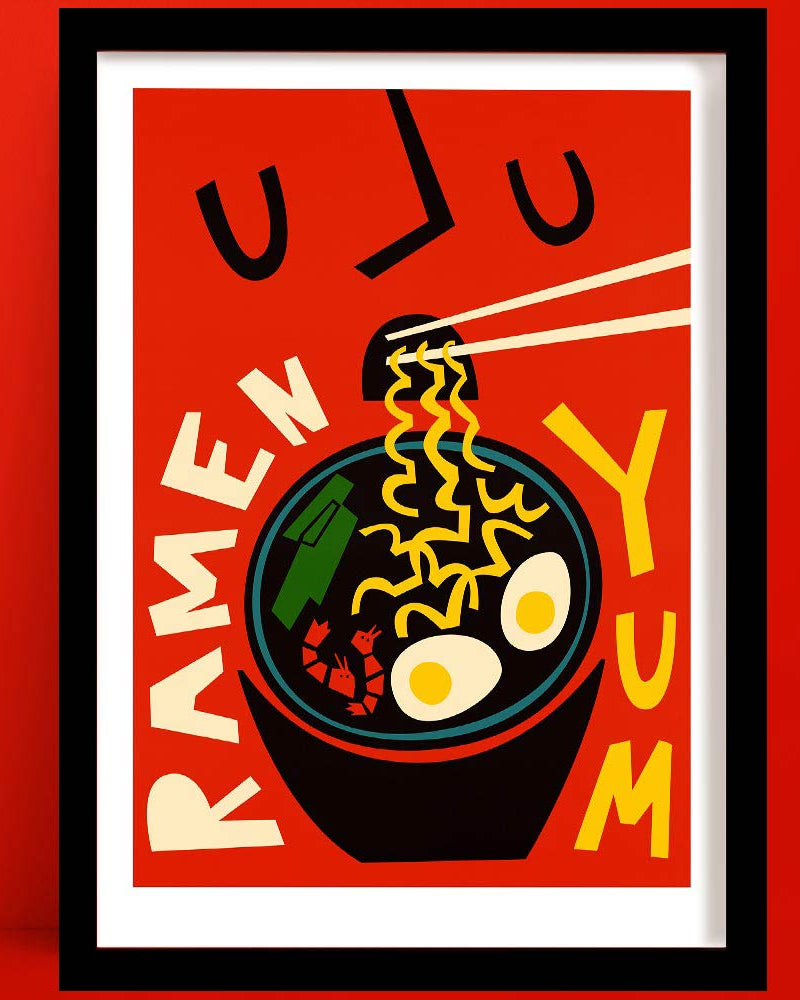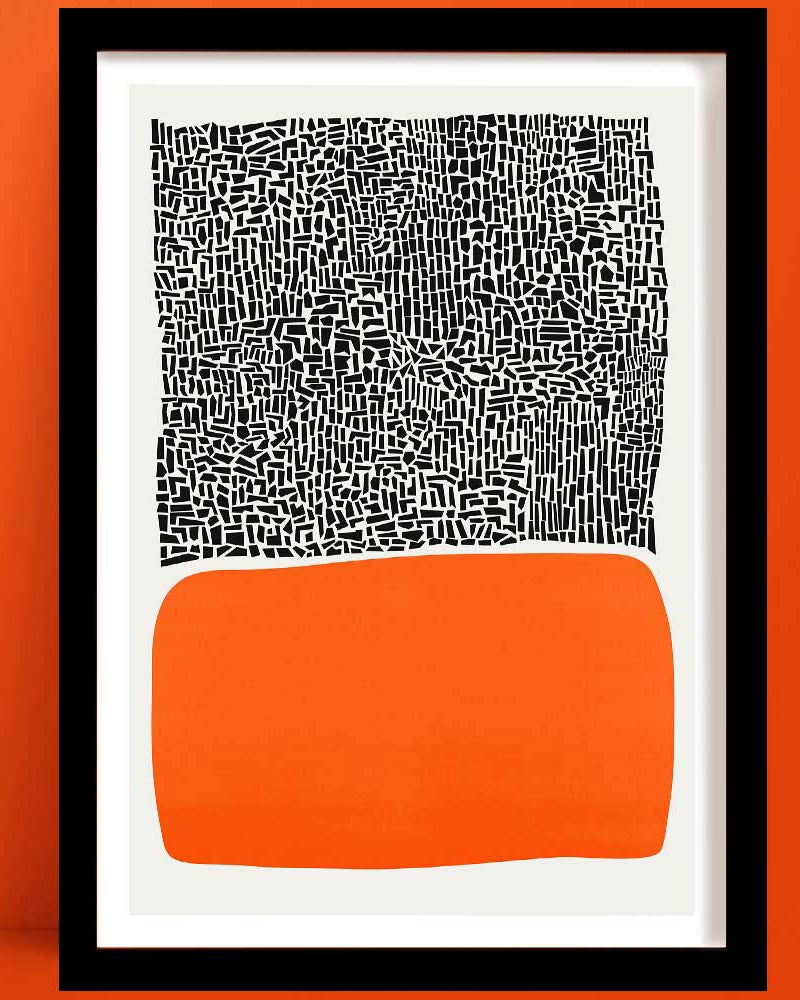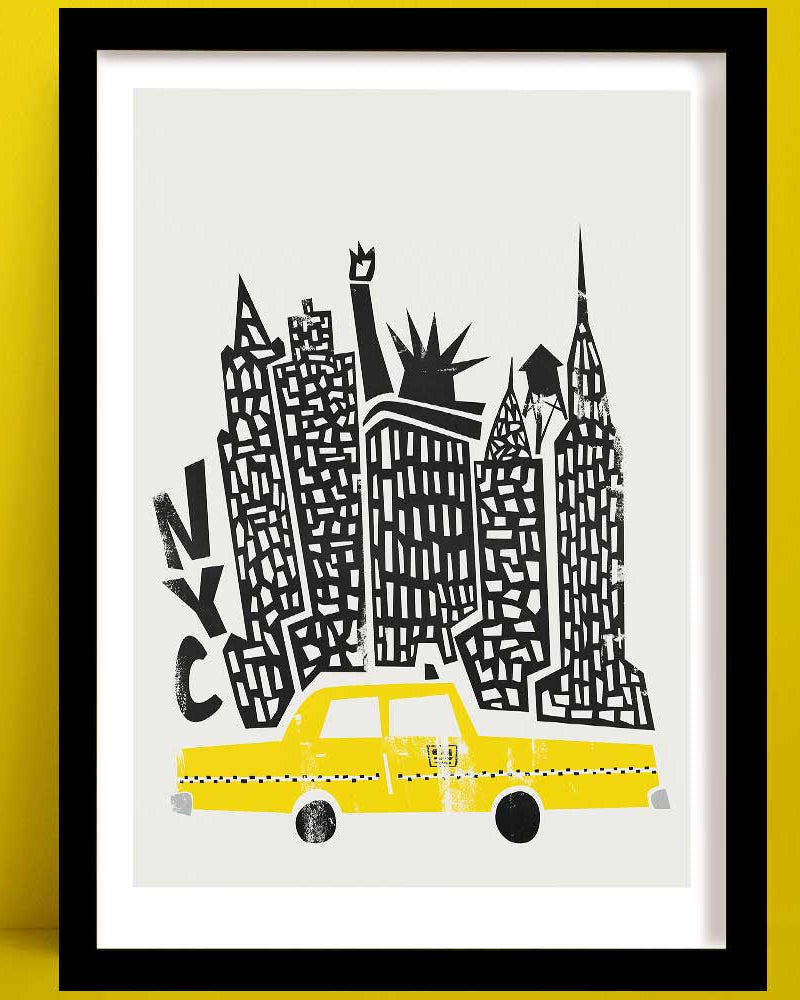We've all been guilty of buying a piece of art and leaving it in its packaging for weeks or months, waiting to find the 'perfect' frame for it. This Framing and Hanging Art guide is here to make the next steps simple with budget-friendly, wall safe tips - so that you can get your art on the walls quickly, without breaking the bank.

What is a standard size?
A standard size is simply a size that’s commonly used for prints and frames. In the UK/EU, these include the ‘A’ sizes (A5, A4, A3, etc.) which match standard printing paper. Internationally, you’re more likely to come across sizes like 20x25cm/8x10” or 50x70cm/20x28". Because these sizes are so common, you can usually find ready-made frames to fit.
Our prints are all standard sizes: we offer ‘A’ sizes for UK/EU customers, and international standard sizes for customers all over the world.
How can I frame my new art inexpensively?
The most cost-efficient way of framing art is by purchasing a ready-made frame - this just means a frame that’s already been made in a standard size like 20x25cm/8x10”, A5, or A4.
For most prints (including ours), a ready-made frame works perfectly. You can find them online, in high-street shops, or even second-hand (charity shops can be great if you’re happy to add a custom mount). If you know the size of your print, you can usually just search for a frame in that size and find plenty of ready-made options.
Will a ready-made frame make my art look cheap?
No, it won't. Ready-made doesn't mean tacky - there are plenty of high-quality ready-made frames available. To be sure of getting a good product, make sure you check the reviews before you buy. Online framers (and many high-street framing shops) offer ready-made frames in standard sizes for reasonable prices, and this is a great way to ensure that you have a well-crafted product while keeping the costs down.
Do I need to worry about the glass? How do I choose between glass, acrylic, or UV protected?
For most prints, we recommend standard acrylic. It’s lighter and safer than glass, which makes it a great option for a busy space.
Some places offer added UV-protection or anti-glare options. These are nice extras, but not always essential. For example, our prints are made with lightfast inks, which hold their colour extremely well over time. That means the added protection of UV-protection acrylic usually isn’t necessary.
If you’re framing something original, vintage, or highly sentimental, then extra UV protection might be worth it, but in that case, we’d always recommend taking the art to a professional framer. They can make sure it’s framed in the most protective way possible.
When should I go to a professional framer - and when is a ready-made frame enough?
It depends on the piece. For most readily available art (including our prints) an off-the-shelf frame is a great, affordable option. It’s more than enough to protect and display your artwork properly.
So, when should you go to a professional framer?
If you’re framing something original, rare, very expensive, or highly sentimental, a professional framer has the expertise to protect it to the highest standard. They’ll use archival materials and techniques that help preserve the piece long-term.
What if the art is really precious to me, but I can't afford a professional framer?
I totally understand this dilemma. Custom framing can sometimes cost more than the art itself - and although it’s absolutely worth it, sometimes the budget simply doesn’t allow for it. This is a situation where you can still choose a good option, even if it’s not perfect. Simply putting the artwork in a frame already goes a long way toward protecting it. If custom framing isn’t in budget, it’s almost always better to frame it than leave it languishing in a tube somewhere. You can always start with what you’re able to do, and get it professionally framed later on.
There are also small steps you can take to add protection:
- Use a mat (mount) to create space between the artwork and the glass/acrylic
- Seal the back with framers tape to help guard against dust and humidity
How do I measure my art for framing?
There are two measurements to consider when framing your artwork:
- Paper size – Lay the print flat and measure the full sheet of paper, from edge to edge (left to right, and top to bottom). For our prints, the size you select is the paper size - so if you've purchased an A2 print, you'll need an A2 frame.
- Image size – Most prints include a white border around the artwork. To measure just the image area, measure only the printed part - again, left to right and top to bottom.
For most art prints, what matters is whether the paper size matches a standard frame size. Most artists (including us) create prints that’s designed to fit straight into a ready-made frame - so if your print is A4, A3, 30x40cm/12x16", etc., you can usually just buy a frame designed to fit a print of that size.
You only need to worry about the image size if you're trying to hide the border, or if the paper size isn’t standard - in that case, you’ll need a custom mount (which we cover in the next section).
What do I do with my weirdly sized art?
Even if your art isn’t a standard size, you can still use a ready-made frame - you just need a custom-sized mat (also called a mount). Many online framers offer this service, and high-street professional framers can cut one for you too.
Here’s how it works:
- The outer size of the mat should match the frame size (e.g. 8x10”, 16x20”) so it fits neatly into a standard frame.
- The aperture (the opening in the mat) should match the size of your artwork. Most framers will cut the aperture about 3mm smaller than the artwork size so the edges are covered slightly — this helps hold the piece in place and accounts for minor measurement differences.
Once your artwork is in the mat, you can place it directly into the frame.
Pro Tip: Use custom mounts to put art in vintage frames.
You can also use the same method to put art into oddly-sized frames. If you find a great frame (say, at a charity shop) but it’s an unusual size, just measure the inside of the frame, and your artwork, then get a custom mat cut to fit both. That way, you can still use the frame you love.
How do I hang my framed print without damaging my walls?
This is a big consideration, especially for renters. Thankfully, you can hang almost any size of print without damaging your walls.
- Small and lightweight prints – A simple nail and picture hook is your simplest option. It only leaves a small hole, which is easy to fill later if needed.
- Medium to heavier prints – Picture hanging strips are a good option. They’re usually labelled with how much weight they can support. Just take extra care when removing them - go very slowly and pull straight down (not outwards) to avoid damaging the wall. One thing to note: they can be slightly visible from the side, depending on your frame and where it’s placed.
- Heavy prints – I don’t usually plug products, but the 3M CLAW picture hangers are the best solution I’ve found for hanging heavier artwork without damage. They’re rated by weight (clearly shown on the pack), and cleverly designed to leave just two small holes - no drilling or rawl plugs needed. We use one to hang a very heavy 26x40” print in our living room.
Final thoughts
Framing your art doesn’t have to be complicated or expensive. Whether you go for a ready-made frame, get a custom mount cut, or invest in professional framing, the most important thing is getting the artwork onto the wall so that you can enjoy it.
If you’ve still got questions, feel free to get in touch - and if you’re browsing our shop, all of our prints are designed to fit standard frame sizes to make things easier for you.





